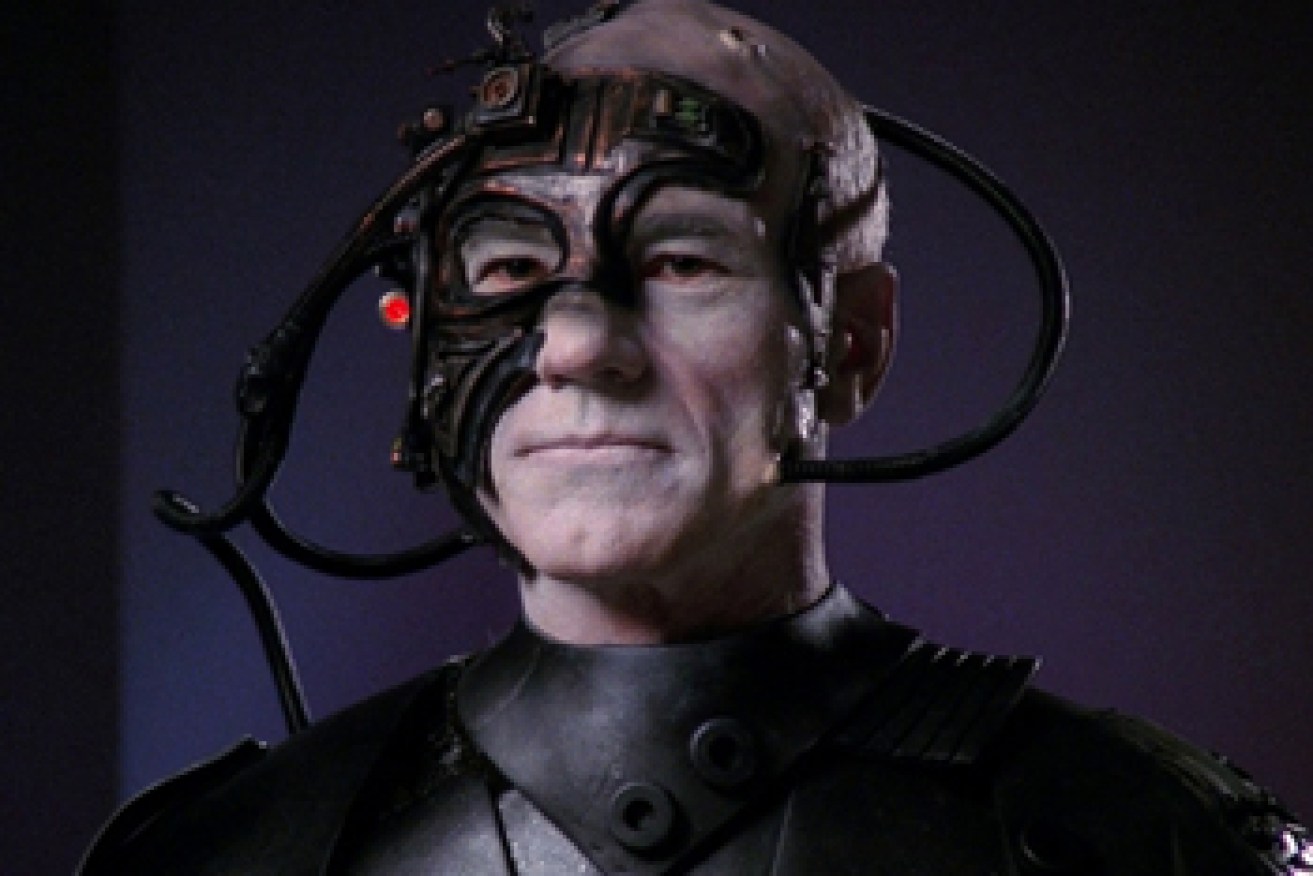These new phones transform … into computers!

Mr Wordman was right before. Maybe phones will eventually connect us wirelessly to everything?
Microsoft has unveiled two new premium smartphones that can be turned into desktop computers.
The software giant launched the Lumia 950 and 950 XL at a live event on Wednesday morning (AEDT), along with several other new products.
Both phones can, through the use of a USB accessory, be connected to a monitor, keyboard and mouse to run the desktop version of Windows 10, something Microsoft was keen to promote.
• This super-expensive phone does almost nothing at all
• Android update better protects your privacy
• Apple unveils a hybrid Steve Jobs would hate
• Twitter launches the lightning bolt feature

The grey USB-C adaptor both charges and transforms the phone. Photo: Microsoft
“The Lumia 950 and 950 XL are phones you can run your entire business on,” Microsoft CEO Satya Nadella said at the launch event in New York City.
History has been unkind to similar devices. Ever heard of the Motorola Webtop or Asus PadFone?
The difference is that other companies tried to sell both the phone and the docking device (either a PC, laptop or tablet).
Instead, Microsoft is just selling the phones and USB-C docks. The phone plugs into the dock, and then the consumer can attach any compatible monitor, TV screen, keyboard and/or mouse the consumer wants – all while simultaneously charging the phone.
Convergence is now

Is this what we really want? And will we like it if and when it does catch on? Photo: Microsoft
A smartphone researcher told The New Daily the new Lumia models were part of a “growing trend” towards the convergence of the mobile phone and the personal computer.
The big unknown variable is whether people actually want these two devices to intersect.
Earlier failed attempts suggest no, but why then would Microsoft go down this path?
Queensland University of Technology’s Dr Christine Satchell was convinced there was market demand.
“Absolutely there is,” she said. “Freedom and ease of use is definitely a plus, and I can see why there is consumer appeal.
“Will we like it once we get it? I don’t know.”
The future could be Star Trek

Mr Wordman was right before. Maybe phones will eventually connect us wirelessly to everything?
US tech journalist Paul Wordman predicted the trend back in 2012. On the website, Parts-People, he wrote that convergence “refuses to die” and was “just too good to stay buried”. This week, Microsoft proved him right.
After the announcement, Mr Wordman told The New Daily that other companies, such as Dell, should create universal adaptors to allow any phone to connect to any screen and keyboard – and then eventually make these wires obsolete entirely.
“Microsoft is on the right track, but should use universal software modules to allow connection to any screen, keyboard combination,” he said.
“Far more importantly, software should allow smartphones to enhance CPU, GPU and RAM on other PC devices to turn cheap laptops into near-supercomputers.
“Powerful phablet phones could be mounted in a sleeve worn on the forearm with Continuum-like wireless connectivity to dumb hardware. Drones of the Borg Collective come to mind, evoking transhumanism with machine-flesh combinations, but one hopes resistance is NOT futile.”
Will it save the Windows phone?

Earlier versions of the Lumia failed to capture market share. Photo: Microsoft
Probably not, which is sad because Windows is, in this author’s opinion, one of the most enjoyable mobile operating systems to use.
Both of the new Lumias will use Microsoft’s latest offering, Windows 10, which enables their transformation into computers.
Once connected to a monitor via USB, a new feature called Continuum blows up the phone’s screen into what a computer running Windows 10 would look like.
But it’s not the operating system that has constrained the Lumia range. The smartphones have struggled to gain market share because of a woefully inadequate app store.
How good a computer would it actually be?

Have I made a mistake, she seems to ask, as her phone-computer struggles to load Netflix. Photo: Microsoft
QUT’s Dr Satchell was opposed to hybridised phone computers, thinking it better to keep the two devices separate for the sake of performance.
As phones, the new Lumias boast Quad-HD displays (5.2-inches for the 950, 5.7-inches for the 950 XL), 20-megapixel cameras, detachable batteries and 32GB of storage. Nothing to sneeze at.
But no matter how powerful their processors (a fact Microsoft is keeping close to its chest), the phones cannot match the performance of a laptop or desktop. And that’s what worried the academic.
“Are we suddenly going to see a dumbing down of the personal computer? With very limited functionality? Is this going to reduce our expectations of what personal computation can do?” Dr Satchell asked.
“I hope not.”
The two models will reach Australia some time before Christmas. US pricing was $549 for the Lumia 950 and $649 for the 950 XL.









